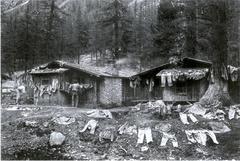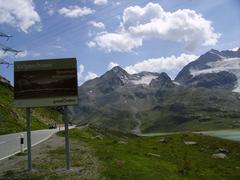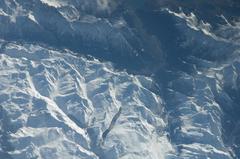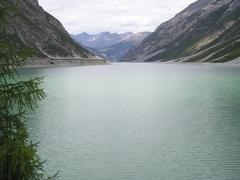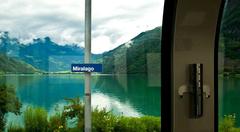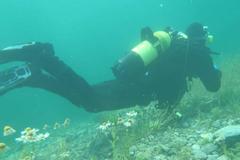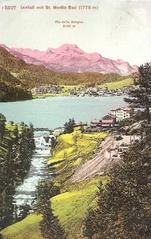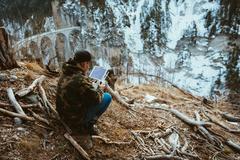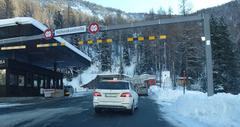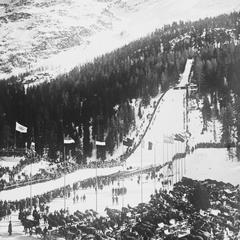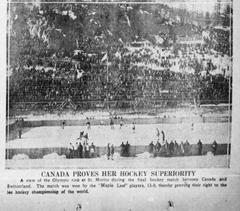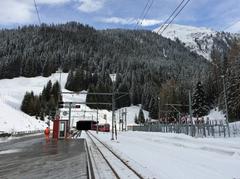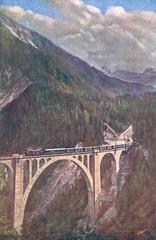San Bernardino Tunnel Visiting Hours, Tickets, and Travel Guide – Canton of the Grisons, Switzerland
Date: 15/06/2025
Introduction
Nestled in the heart of the Swiss Alps in the Canton of the Grisons (Graubünden), the San Bernardino Tunnel is a marvel of engineering and an essential Alpine transit corridor. Complementing the historic San Bernardino Pass, which has served travelers since Roman times, the tunnel provides a reliable, year-round link between northern and southern Europe. Opened in 1967, it has transformed cross-Alpine travel, ensuring connectivity through even the harshest winters (myswitzerland.com; Wikipedia).
This guide explores the tunnel’s history, cultural and strategic significance, technical evolution, and practical information for visitors. Whether you are a history buff, an Alpine explorer, or simply planning a road trip through Switzerland, you’ll find detailed insights and travel tips for a safe and memorable journey.
Table of Contents
- Early History: The San Bernardino Pass
- Road Development and Alpine Infrastructure
- The Need for a Year-Round Connection
- Conception and Construction of the San Bernardino Tunnel
- Technical Evolution and Safety
- The Tunnel’s Role in Swiss and European Transit
- Practical Information: Visiting Hours, Tickets, Accessibility
- Nearby Attractions and Travel Tips
- Preservation of Historical Routes
- FAQs
- Conclusion
- References
Early History: The San Bernardino Pass
For centuries, the San Bernardino Pass (2,065 m) has provided a crucial link between northern and southern Europe. Archaeological findings confirm its use since Roman times for trade and travel. One of the most daunting sections for early travelers was the Via Mala Gorge—a deep, narrow ravine whose name means “bad road”—which was only tamed in the late Middle Ages with the construction of improved routes (myswitzerland.com; swissfederalism.ch).
Road Development and Alpine Infrastructure
The original path was a mule track, known as the Mulattiera, still visible today. Expansion in the 18th and 19th centuries included new serpentines and dry stone walls, built using traditional Alpine techniques and later carefully restored. These routes, now preserved, showcase the region’s engineering heritage (en.wikipedia.org).
The Need for a Year-Round Connection
Despite road improvements, heavy winter snow blocked the pass for months, isolating southern valleys like Misox and Calanca. The growth of motor traffic in the 20th century made a year-round crossing imperative, prompting the development of a tunnel beneath the Alpine divide (swissfederalism.ch).
Conception and Construction of the San Bernardino Tunnel
Planning began in the postwar era, and the San Bernardino Tunnel—6.6 kilometers long—was inaugurated in 1967. It links Hinterrhein and San Bernardino, forming a key part of the A13 motorway. The tunnel’s construction was a landmark achievement, ensuring year-round access and boosting cross-border trade and travel (hitachienergy.com).
Technical Evolution and Safety
The tunnel underwent significant upgrades in the early 2000s, including new power systems, advanced ventilation, modern lighting, and comprehensive emergency facilities. These improvements ensure compliance with Swiss and European safety standards and support the high volume of transit, especially as an alternative to the Gotthard Tunnel (hitachienergy.com).
The Tunnel’s Role in Swiss and European Transit
As the second most important Alpine road tunnel in Switzerland, the San Bernardino Tunnel connects the A13 motorway from Chur to Bellinzona and is heavily used by travelers, including those heading to Italy. It serves as the main detour during Gotthard Tunnel closures and is vital for both local communities and international traffic (alpenpaesse.de; vignetteswitzerland.com).
Practical Information: Visiting Hours, Tickets, Accessibility
Visiting Hours and Closures
- San Bernardino Tunnel: Open 24/7 year-round for vehicles, except for scheduled maintenance closures (usually announced in advance, typically at night from 22:00 to 05:00).
- San Bernardino Pass: Open seasonally from late May to October, depending on snow conditions; closed in winter.
Tickets, Tolls, and Regulations
- Tunnel Toll: No specific toll applies to the tunnel itself.
- Motorway Vignette: All vehicles up to 3.5 tons must display a valid Swiss motorway vignette to use the A13 and the tunnel.
- Heavy Vehicles: Vehicles over 3.5 tons are subject to special Swiss heavy vehicle fees (Digitale Vignette Schweiz).
Vehicle Restrictions and Safety
- Permitted Vehicles: Private cars, caravans, and light commercial vehicles.
- Prohibited: Pedestrians and cyclists are not allowed in the tunnel.
- Driving Rules:
- Speed limit: 80 km/h
- No overtaking
- Headlights must be on
- Maintain at least 150 m distance from the car ahead
- Emergency: Emergency bays and call points are located throughout the tunnel (Evignette Switzerland).
Accessibility
- Year-round access via tunnel; pass route is only open in summer and not suitable for large vehicles or inexperienced drivers.
Nearby Attractions and Travel Tips
Scenic Drives and Villages
- Hinterrhein: Starting point to the north, known for hiking and historic bridges.
- San Bernardino: Alpine village with traditional Swiss-Italian character, mineral springs, and winter sports.
Natural and Cultural Highlights
- Viamala Gorge: Dramatic ravine offering walking trails and historic significance.
- Mesocco Castle: Ruins near the southern portal with panoramic views.
- Lago Moesola: Alpine lake beside the pass road.
- Hiking and Cycling: Numerous trails in the Grisons region for all skill levels.
Facilities
- Service areas and rest stops at both portals.
- Tourist offices in San Bernardino and Hinterrhein provide information, maps, and assistance (MySwitzerland).
Preservation of Historical Routes
The original Mulattiera mule path and restored dry stone road walls are preserved as cultural heritage, offering a glimpse into centuries-old Alpine travel and engineering traditions (myswitzerland.com).
Frequently Asked Questions (FAQ)
Q: Do I need a ticket to use the San Bernardino Tunnel?
A: No, but a Swiss motorway vignette is required for vehicles up to 3.5 tons.
Q: When is the tunnel open?
A: 24/7 year-round, except during scheduled night maintenance closures.
Q: Are guided tours available?
A: No guided tours inside the tunnel. The tunnel is strictly for vehicular transit.
Q: Can I cycle or walk through the tunnel?
A: No, the tunnel is closed to pedestrians and cyclists.
Q: Is the pass open all year?
A: No, the pass is open from late May to October, depending on snow conditions.
Q: What should I do in an emergency?
A: Use one of the marked emergency bays or call points. Do not reverse or turn around in the tunnel.
Conclusion
The San Bernardino Tunnel and Pass represent the ongoing evolution of Alpine transport, seamlessly connecting cultural, economic, and natural landscapes across Switzerland and Europe. With modern safety features, historic significance, and easy access to the spectacular scenery of Grisons, this route offers both a practical passage and a fascinating travel experience. Plan ahead, stay informed, and make the most of your Swiss Alpine adventure.
